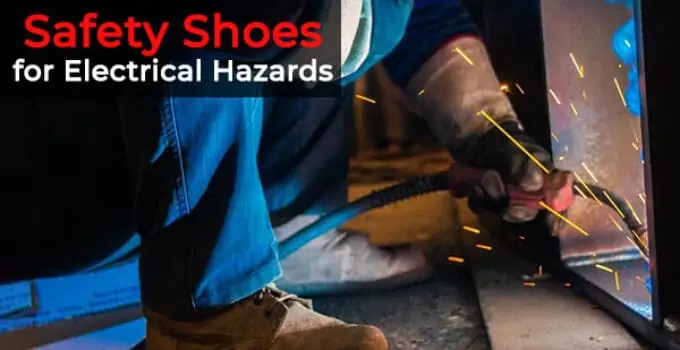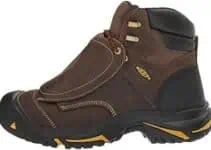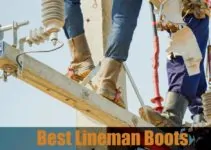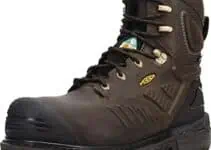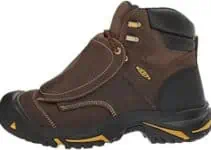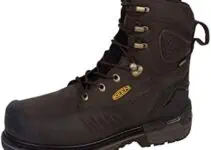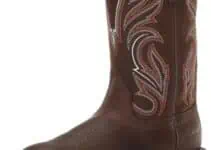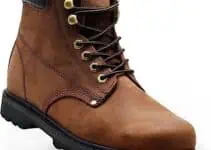Safety boots are the protection of the worker’s feet. In addition to the safety against impact provided by the presence of a toe cap required standard, safety boots provide protection against various risks that are specific to the worker’s environment.
Amazon deals
Mechanical risks
Mechanical risks are shocks, jamming, crushing, perforations, punctures, cuts…

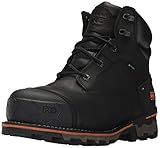






These different risks are very common in most trades. For example, the risk of falling objects and perforation is very present on construction sites. The risks of being caught or crushed are very common in the transport and logistics sectors.
To mitigate these risks, safety boots are systematically fitted with a protective toe cap that resists a shock of 200 joules and crushing at a compressive force of 1500 daN. Note that additional protection can be added to work boots.
For example, over-protection of the metatarsals or protection of the malleoli for lateral impacts on these small, protruding, and very painful bones.
Regarding the risk of perforation, most work boots are nowadays equipped with an anti-puncture sole.
Concerning the risk of cuts and other mechanical damage to the shoe, work boots can be made of very abrasion-resistant materials such as leather, microfiber, or very strong textiles.
Electrical risks
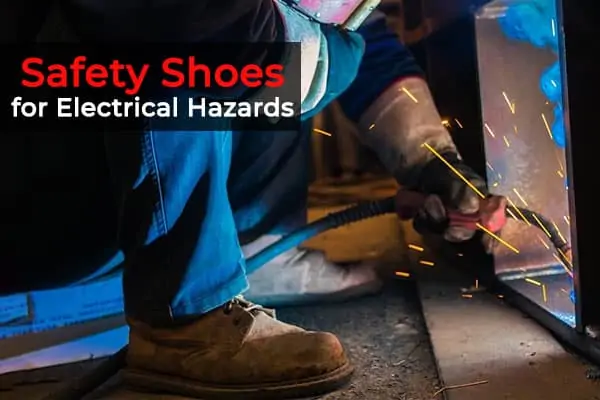
electrical risks
Electrostatic discharges
Electrical risks include protection against electrostatic discharges.
When we are in motion, our body accumulates static electricity which discharges on any foreign body we come in contact with. These small electrostatic discharges are often very small, but they can still cause damage, such as damage to electrical components or trigger a fire or explosion in the most hazardous environments.
In the EN ISO 20345 standard, the additional requirement “A” certifies that the work boots is “Anti Static”, i.e. that it has an electrical resistance of between 0.1 and 1000 MΩ.
Be careful though: having an A (Antistatic) standard shoe does not mean that the worker can operate in explosive areas . There are several levels of protection against the risk of electrostatic discharges.
The ESD (Electro Static Discharge) certification, which is not part of the EN ISO 20345 standard, is more precise and demanding. It certifies that the work boots have an electrical resistance between 0.1 and 100 MΩ (instead of 0.1 and 1000 MΩ for requirement A).
For ATEX environments that present life-threatening risks, the entire environment of which the footwear is a part must be certified by an accredited and notified body such as INERIS.
What about electricians?
Be careful not to think that Antistatic or ESD shoes are “special electricians” shoes.
For people who work with low voltage electricity, there are insulating boots or shoes that do not transmit electricity to the ground. As for an ATEX environment, the shoe is not everything: there is no point in having an insulating shoe if you put your knee on the ground.
Thermal risks
Thermal hazards are cold and heat rises, contact heat, molten metal projections, fire, etc.
Cold
Safety boots can protect against the cold thanks to thick leathers or fur or Thinsulate linings. The risks of cold are present during the winter season in particular.
In case of low temperatures, it is also important to choose a work boot that is resistant to moisture penetration (WRU and/or WR). Wet feet increase the feeling of cold feet. A CI standard work boots provide protection against the ingress of cold into the shoe.
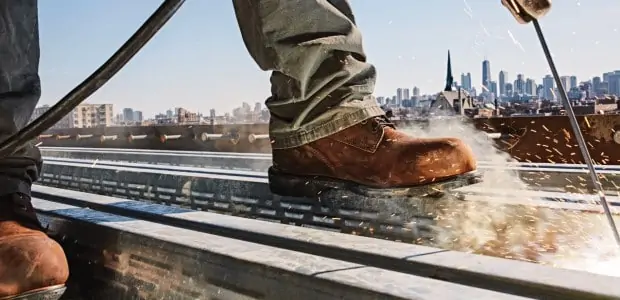
work boots
Heat
Heat resistance is mainly achieved through the sole with materials such as rubber that resist heat by contact with hot floors. We speak of HRO work boots. The HRO requirement certifies that the outsole of the work boots is resistant to contact heat of 300°C.
As for the resistance to heat rising in the shoe, it is the HI requirement that attests to this.
Some leathers are also resistant to molten metal splashes and other materials are flame retardant, i.e. treated so as not to spread the fire.
Risks related to moving action
The risks associated with a moving action are slips and false movements leading to falls and injuries.
The most common risk remains the risk of slipping, which causes falls on the same level or twists. Here, a suitable anti-slip shoe can be useful. It is necessary to analyze the soil to recommend the appropriate crampon and opt for nitrile rubber, which is the most adherent material on smooth ground.
The risk of slipping is regulated by the EN ISO 20345 standard under the SRA, SRB, and SRC requirements. The SRA concerns the slip resistance on the ceramic floor and the SRB on the steel floor. The SRC is obtained by validating the two requirements SRA and SRB.
Another common injury is twisting your ankle while walking on an obstacle. Here, you should choose work boots with high heels that will provide better ankle support.
Chemical risks are related to corrosive, toxic or irritating dust and liquids.
The materials used in safety boots must meet certain resistance requirements, such as resistance to abrasion. Although each liquid is different and must be tested, materials such as leather and microfiber provide sufficient protection against certain corrosive chemicals.
The soles of work boots can also be designed to resist hydrocarbons (FO requirement).
A work boots is put on to protect. Any discomfort generated by the work boots will create risks for the person. With bad equipment, plantar hyper solicitations are likely to appear.
The foot being the base of the human body, these problems at the base localized in the feet, go up all the locomotor chain and come to impact the overlying parts (ankles, knees, hips, spine…) leaving appearing on the long term of muscular and articular pains provoking TMS (Musculoskeletal disorders) and lumbago.

